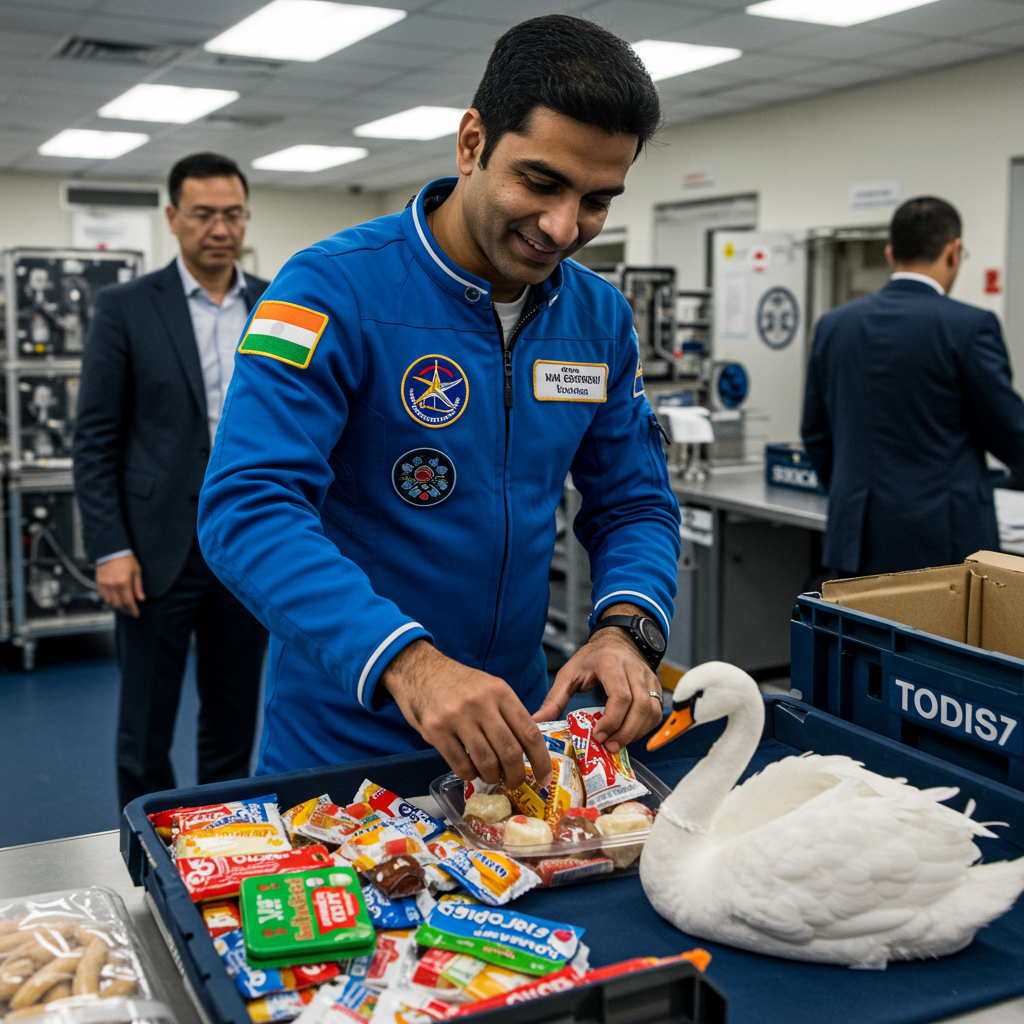As Group Captain Shubhanshu Shukla prepares to make history as only the second Indian to journey to space and the first ever to visit the International Space Station (ISS), his packing list reveals a blend of mission essentials and deeply personal, culturally significant items. While astronauts famously travel light due to the immense cost of lifting mass into orbit, Group Captain Shukla’s bag holds a few unusual treasures alongside his critical equipment.
His journey aboard the Axiom Mission 4 (Ax-4), a commercial spaceflight operated by Houston-based Axiom Space, lifts off from NASA’s Kennedy Space Center in Florida. Piloting the mission under the command of veteran NASA astronaut Peggy Whitson, Group Captain Shukla is part of an international crew that includes Slawosz Uznanski-Wisniewski of Poland and Tibor Kapu of Hungary, marking a return to space for their respective nations after four decades. The mission, a collaboration involving NASA, India’s space agency ISRO, and the European Space Agency (ESA), utilizes a SpaceX Crew Dragon capsule launched by a Falcon 9 rocket.
The mission carries immense significance for India, generating widespread interest and celebration, including in Group Captain Shukla’s hometown of Lucknow. His participation is seen as invaluable experience for India’s ambitious human spaceflight program, Gaganyaan, and future goals like establishing a space station by 2035 and sending an astronaut to the Moon by 2040. India invested significantly, reportedly paying 5 billion rupees (around $59 million) for his seat and training.
During their planned two-week stay on the ISS, the crew will focus on conducting approximately 60 scientific experiments, including seven designed by ISRO to study the effects of space on biology and microgravity. But beyond the scientific payloads and piloting duties, Group Captain Shukla is carrying items that connect him to his roots and inspire the journey.
Sweet Delights for the Cosmos
Among the more tangible items are specially prepared Indian sweets. Despite ample food being available on the ISS, Group Captain Shukla is bringing some of his personal favourites: mango nectar, carrot halva, and moong dal (lentil) halva. He plans to share these calorie-rich treats with his fellow crew members, offering a taste of Indian culture far above the Earth. His sister noted his dedication to fitness, particularly yoga, ensuring he can balance the indulgence.
Joy, the Zero-G Swan
Another unique ‘passenger’ is a small, white toy swan named “Joy.” Introduced by the crew as their “fifth crew member,” Joy serves a practical, yet charming purpose. This five-inch-tall figure acts as the mission’s zero-G indicator, confirming to the crew that they have successfully transitioned into microgravity shortly after launch.
More than just an indicator, the swan holds deep cultural meaning for the international crew. In India, it symbolises wisdom, purity, and the pursuit of truth, and is associated with Saraswati, the Hindu goddess of learning. Commander Whitson highlighted its representation of purity, loyalty, and resilience in Poland, and loyalty, grace, and the beauty of nature in Hungary. Group Captain Shukla emphasized that carrying the swan signifies the pursuit of knowledge, clarity of purpose, and grace under pressure. The name “Joy,” proposed by the Hungarian astronaut Tibor Kapu, reflects the belief that a joyful team is a healthy and effective one.
A Secret Souvenir for a Hero
Group Captain Shukla, an Indian Air Force pilot with over 2,000 flying hours, was born in 1985, just a year after Wing Commander Rakesh Sharma became the first Indian citizen to fly to space aboard a Russian Soyuz in 1984. Shukla grew up inspired by Sharma, who he now considers a mentor offering valuable advice for the mission.
In a touching gesture, Group Captain Shukla revealed he is carrying a surprise item up to the ISS specifically for his hero, Rakesh Sharma. He has kept the nature of this souvenir a secret, promising it will be presented to Mr. Sharma upon his return to Earth.
As Group Captain Shukla embarks on this historic voyage, piloting the Ax-4 mission and contributing to scientific advancement, he is also bringing pieces of his home, his culture, and a tribute to his inspiration into orbit, truly carrying, as he put it, the “hopes and dreams of a billion hearts.”




